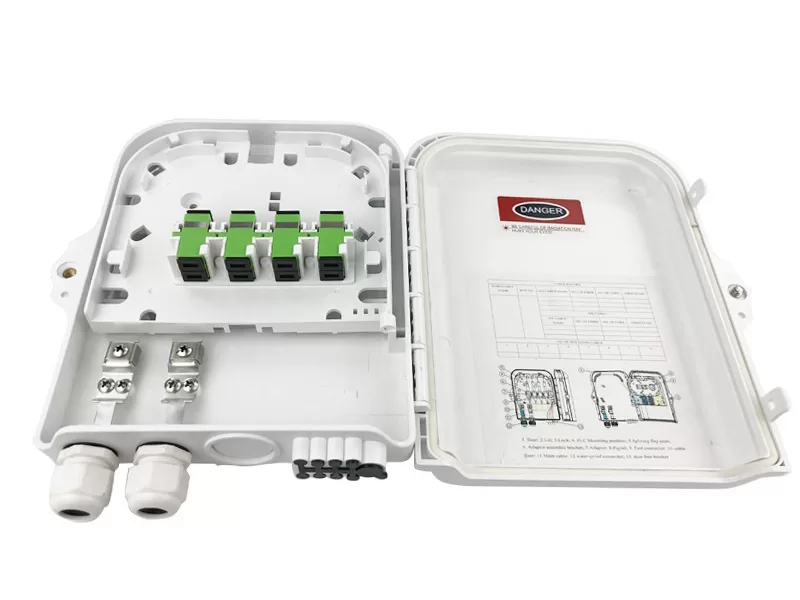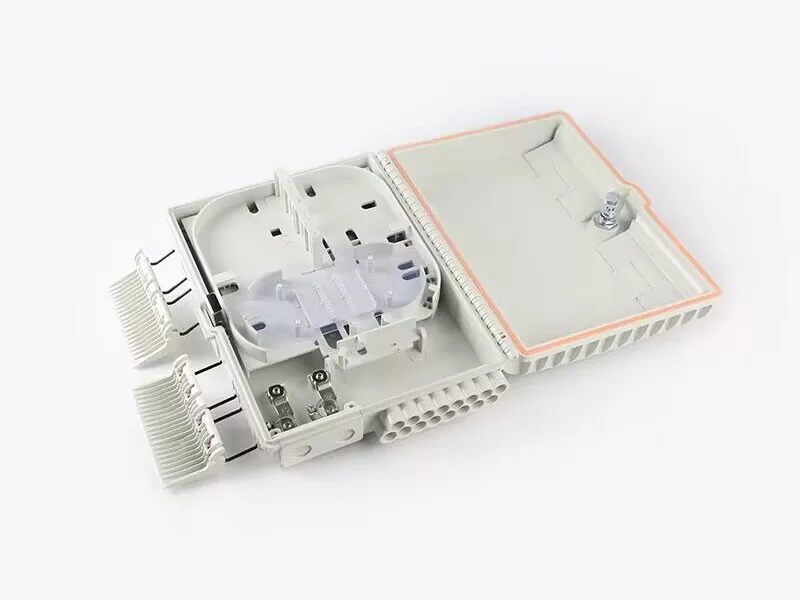Fiber distribution boxes (FDBs) are used to distribute and manage fiber optic cables in a variety of applications, including telecommunications, data centers, and industrial facilities. FDBs are available in a variety of sizes and configurations, including 8-port and 16-port models. You may be facing a decision between an 8-port and a 16-port model, both types of boxes have their own specific uses and benefits, and the decision should be based on your specific needs and requirements. In this article, we will compare the two types of fiber distribution boxes and help you understand the factors that should be considered when making your choice.
First, let’s start by comparing the two types of boxes. An 8-port fiber distribution box is designed to accommodate eight fiber optic cables, while a 16-port fiber distribution box can hold up to 16 cables. Both boxes are made from high-quality materials, such as metal or high-density plastic, and are designed to provide maximum protection for the fiber optic cables.
When it comes to features, both types of boxes may offer similar features, such as fiber optic splice trays, cable management bars, and space for additional equipment or tools. However, the 16-port box tends to have more space and usually provides additional features that may not be available in an 8-port box, such as additional splice trays or more advanced cable management options.
Now let’s look at the factors that should be considered when making your choice:
- Your fiber optic cable requirements: The number of fiber optic cables you need to manage will determine the type of distribution box you should choose. If you have a smaller installation with fewer cables, an 8-port box may be sufficient. However, if you have a larger installation with a higher number of cables, a 16-port box may be more suitable.
- Available space: The size of the distribution box is also important to consider. A larger box may provide more space for additional equipment, tools, and splice trays. However, if you have limited space available, an 8-port box may be a better choice.
- Your budget: The cost of the distribution box is another factor to consider. A 16-port box is usually more expensive than an 8-port box due to its larger size and additional features. Therefore, your budget should dictate the type of box you should choose.
- Your work requirements: The type of work you need to do inside the distribution box is also important to consider. If you need to perform more advanced cable management or splicing tasks, a 16-port box with additional features may be more suitable. However, if your work requirements are basic, an 8-port box may be sufficient.
- Future expansion: Finally, you should also consider future expansion when making your choice. If you plan to expand your fiber optic network in the future, a larger 16-port box may provide more flexibility and room for additional cables and equipment. However, if your network is currently small and will not be expanding in the near future, an 8-port box may be a more cost-effective choice.
Benefits of Using an 8-Port Fiber Distribution Box

Here are some of the benefits of using an 8-port FDB:
- Lower cost: 8-port FDBs are typically less expensive than 16-port FDBs.
- Smaller size: 8-port FDBs are typically smaller than 16-port FDBs, which makes them ideal for tight spaces.
- Easy to install and maintain: 8-port FDBs are typically easy to install and maintain.
Benefits of Using a 16-Port Fiber Distribution Box

Here are some of the benefits of using a 16-port FDB:
- More capacity: 16-port FDBs have more capacity than 8-port FDBs, which means they can accommodate more fiber optic cables.
- Future growth: If you plan on expanding your network in the future, a 16-port FDB will give you the flexibility to add more fiber optic cables.
- More features: 16-port FDBs often have more features than 8-port FDBs, such as cable management panels and bandejas de emenda.
Recommendation
Which type of FDB you choose depends on your specific needs. If you have a limited number of fiber optic cables and limited space, an 8-port FDB may be a good choice. However, if you have a large number of fiber optic cables, or if you plan on expanding your network in the future, a 16-port FDB may be a better choice.
Here are some additional things to consider when choosing an FDB:
- Segurança: FDBs can be a target for theft and vandalism. Choose an FDB that has security features, such as locks and alarms.
- Escalabilidade: Your network needs may change over time. Choose an FDB that can be scaled to meet your future needs.
- Support: Make sure to choose an FDB supplier that offers good customer support. This will be important if you need help with installation, troubleshooting, or maintenance.
FiberCheap is China’s leading fiber distribution box supplier. With over 13 years of design and production experience, FiberCheap has helped hundreds of fiber optic Internet companies achieve great success over the years. If you have any questions about choosing the right fiber distribution boxes for your project, please let us know.
